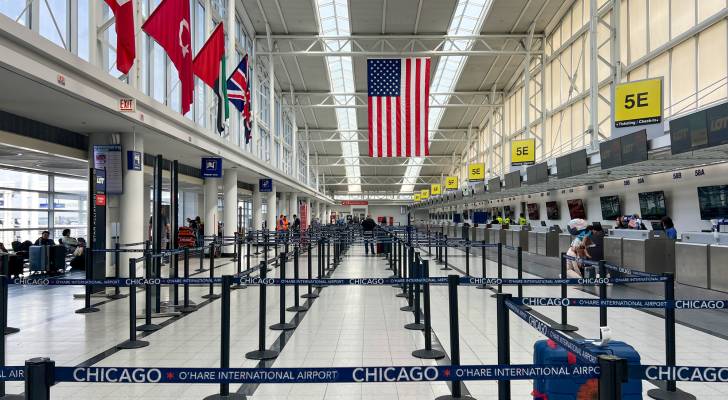‘People tend to shelter in place when the future of their job is uncertain’: How homebuyers can still get ahead in an uncertain market with rising prices and mortgage rates


With home prices continuing to rise and mortgage rates remaining stubbornly high, is the American dream of homeownership out of reach? Home prices jumped 3.8% in February compared to the same time last year, according to the latest National Association of Realtors (NAR) findings. That translates to a median cost of $398,400 for a typical […]
My rich sister-in-law added her 10-year-old to her credit card to boost her credit score — should I feel bad for not doing the same for my kids?


Your sister-in-law is not alone: A number of TikTok influencers using the hashtag #generationalwealth are recommending adding your child as an authorized user on your credit card as a “hack” to help them establish a credit history. Don’t miss I’m 49 years old and have nothing saved for retirement — what should I do? Don’t […]
Does ‘one more year’ of work really matter when it comes to retirement safety in Canada? Yes — and it could be the biggest retirement decision you make. Here’s why


You’ve reached retirement age and have a decent nest egg to fund your golden years. But you’re also wondering whether you should work just one more year to boost your savings even further. Then again, will one more year of work really matter in the grand scheme of things? Well, it does. But it’s not […]
Vanguard finds more Americans are treating their 401(k)s like emergency funds — here’s what to consider before making a hardship withdrawal


Life doesn’t always go as planned. Maybe you lost your job or you’re facing uninsured medical expenses. And maybe you’ve already run through your emergency savings. Don’t miss I’m 49 years old and have nothing saved for retirement — what should I do? Don’t panic. Here are 5 of the easiest ways you can catch […]
Air travel between the US and Canada is set to plunge 70%, and domestic tourism has also slowed — how to plan your trips as Trump’s policies hit travel demand


Many Canadians have decided not to travel in the U.S. as a trade war continues. Don’t miss I’m 49 years old and have nothing saved for retirement — what should I do? Don’t panic. Here are 5 of the easiest ways you can catch up (and fast) Car insurance in America now costs a stunning […]
Nearly 800,000 Oklahomans stressing over proposed Social Security cuts — as insiders warn of ‘system collapse’ within next 30 to 90 days. What to know about protecting your nest egg


About 800,000 Oklahomans depend on Social Security — and they’re wondering how proposed Security Social cuts could impact their retirement. “Oklahomans want to hear and make sure that Social Security is protected and saved, not only for them, but their children, grandchildren,” Sean Voskuhl, AARP Oklahoma state director, told Oklahoma’s News 4. “More than 22% […]
Bernie Sanders calls White House allegations of Social Security fraud and waste ‘a prelude not only to cutting benefits, but to privatizing.’ How outsourced Social Security might work


Could misinformation about Social Security be paving the way for privatization? That’s how Bernie Sanders sees it. Sen. Bernie Sanders of Vermont told CNN that lying about Social Security “is a prelude not only to cutting benefits, but to privatizing Social Security itself.” By making the system appear dysfunctional, then “why would anybody want to […]
Finance professor bought Nvidia at US$0.48/share — but sold early and missed a life-changing gain of more than 25,000%. Here’s how investors can avoid his mistake 2025


Long-term investing can test even the most disciplined investors. With markets swinging on everything from AI breakthroughs to political headwinds, the temptation to act emotionally — especially during big wins or downturns — is real. Amos Nadler, a behavioural finance expert and former professor at Western University’s Ivey Business School, knows this first-hand. Years ago, […]
‘We’re looking at a slowdown’: 3 warning signs point to a U.S. recession. Find out what the indicators are and how to protect your finances in the months ahead


The U.S. is not in a recession — yet. But with threats of high tariffs on U.S. imports, policy uncertainty, mass deportations and Department of Government Efficiency (DOGE) cuts, some economic observers believe the odds are rising. “We’ve got a real uncertainty problem, it’s going to be hard to fix that,” former Treasury Secretary Lawrence […]
Is US exceptionalism on pause, fading or dead? Economist Mohamed El-Erian says it’s under ‘enormous pressure’ — here’s how much of your portfolio should be in international stocks and bonds


With the Trump administration’s political and economic policies shocking many around the world, some strategists are pondering if American exceptionalism is at risk. U.S. exceptionalism is the belief among investors and businesses that the country is unique and superior to others. This idea bolsters its economy. Predictability and the rule of law have given the […]